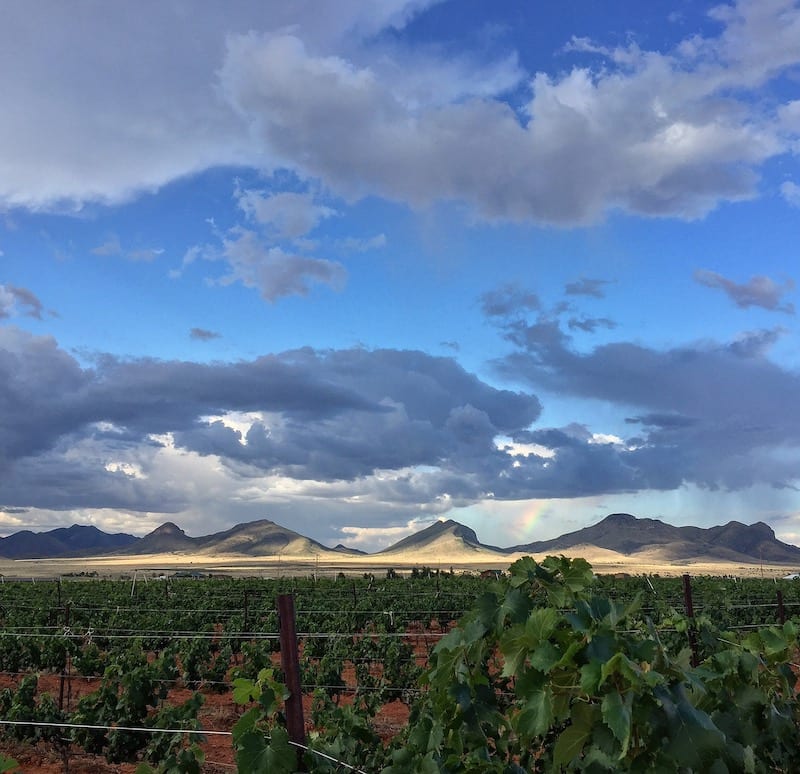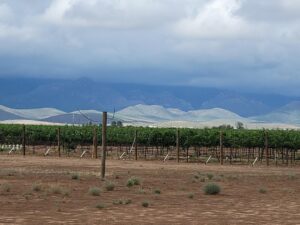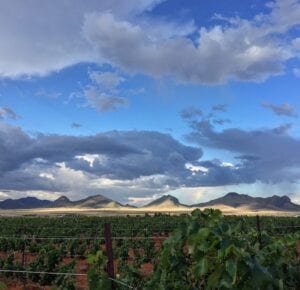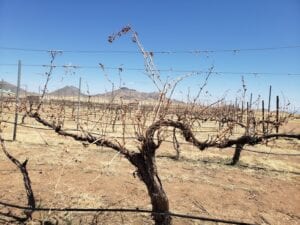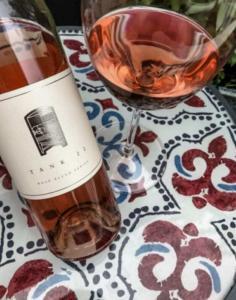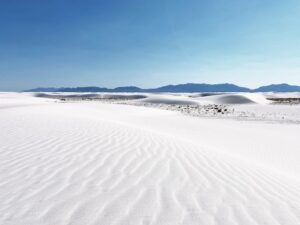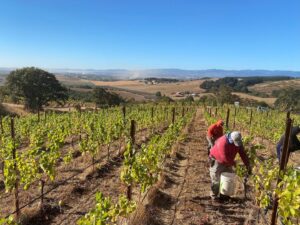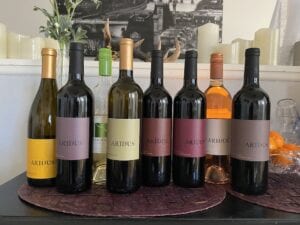Discover ARIZONA
Wine Country
Our Arizona Wine Travel Guide shares a brief history of the state's wine country, terroir, where to sip, where to stay and things to do beyond the vines.
There’s more to Arizona than desert and cacti, the state is ushering in a new era of viticulture. With three prominent wine regions in the state, Arizona is an exciting – and budding – region to sip in.
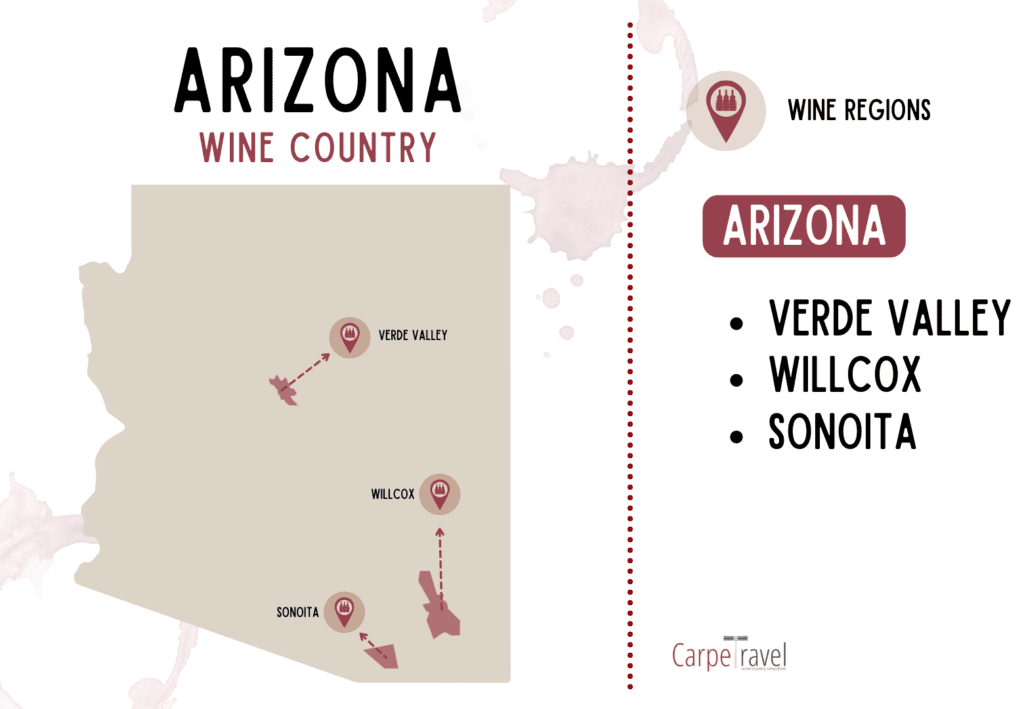
WHERE IS ARIZONA WINE COUNTRY?
Arizona’s wine regions are near major cites making for an easy wine country getaway. An hour from Tucson you can sip in the Sonoita AVA or head an hour east to the Willcox AVA. The Verde Valley is just north of Phoenix, about a two-hour drive and sits in the ever-growing popular escape of Sedona.
BEST TIMES TO VISIT
The Spring and the Fall are ideal times to visit the Arizona wine country. However, keep in mind that Tucson and Sedona sit at higher elevations, making them great summer escapes since the temperatures are cooler than other areas in Arizona.
TOP GRAPE VARIETIES IN ARIZONA
Today, the Arizona wine industry continues to grow, with more than 110 wineries, vineyards and cellars throughout the region. Some of Arizona’s highest quality white wines include Viognier, Malvasia Bianca and Chenin Blanc. Varietals native to the Rhone Valley have also been widely successful in producing some of Arizona’s most popular reds.
White Wine Grapes
- Chenin Blanc
- Malvasia Bianca
- Viognier
RED Wine Grapes
- Grenache
- Cabernet Sauvignon
- Mourvedre
- Syrah
Arizona is one of the oldest wine producing regions in the United States. Its rich and well aged wine history dates back to the 16th century when Spanish Jesuit priests began producing wine for religious sacramental ceremonies.
Like most wine regions in the western United States, Arizona’s was rooted by Catholic priests moving north from Mexico, establishing churches and planting vines for sacrament. Father Eusebio Francisco Kino is believed to be the Jesuit priest to have brought wine to Arizona…along with 24 missions in southern and northern Arizona.
As the region grew in population so did the demand for wine. Leading settlers to begin planting and producing their own local wines. It was the settlers who drove the growth of wine production and the industry in Arizona for next 100 years…
When National Prohibition took place in 1920, Arizona's budding wine industry was snipped. It wasn't until the early 1980’s that a rebound began.
Following a study conducted by Dr. Gordon Dutt in 1970 that “demonstrated the feasibility of various wine growing regions,” The Arizona Farm Winery Act was developed helping to reestablish viticulture in Arizona.
What was National Prohibition, how did it come to pass, how did it change the United States and how did it end? Read on…
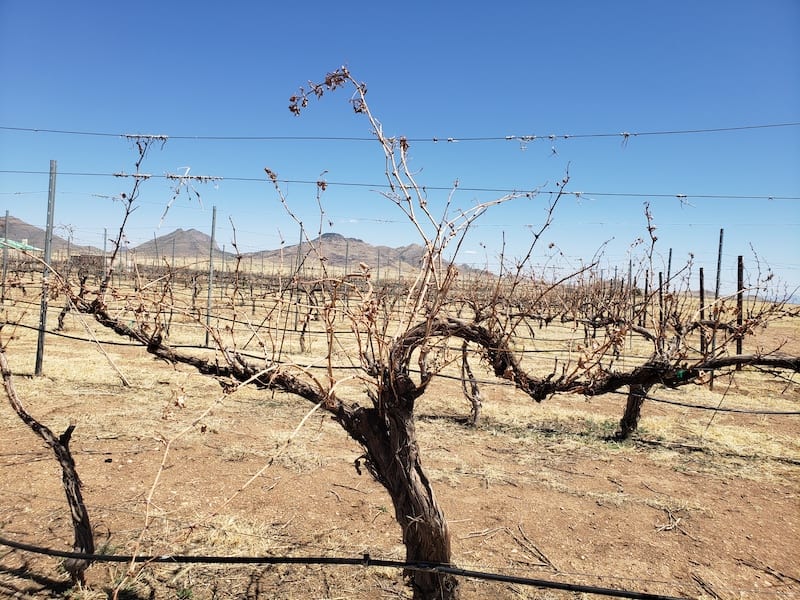
Christina Barrueta wrote a book on Arizona Wine, A History of Perseverance & Passion. (You should read it!) I’ve summarized a little from her interview with Dr. Dutt.
Dr. Dutt was working in research at the University of California – Davis and came to Arizona for a project. Having lived among the vines in Cali the fact there weren’t any in Arizona struck him as odd.
There was after all elevation, climate shifts during the day and night as well a some moisture. Leading him to think wine could be grown and produced in Arizona. Dr. Dutt and his team planted Vitis Vinifera that could sustain dry climates, resulting in Arizona’s first wine production since National Prohibition.
Arizona's modern-day wine industry was born...
Dr. Dutt’s research led to The Arizona Farm Winery Act in 1982 that established. (It takes several years for vines to grow and produce wine, hence the longer period of time.)
The first licensed wineries in Arizona were formed shortly after the enactment of the new law with Dr. Dutt himself establishing Sonoita Vineyards.
Today, the wine industry continues to grow and there are more than 110 wineries, vineyards and cellars throughout the region.
Some of Arizona’s highest quality white wines include Viognier, Malvasia Bianca and Chenin Blanc. Varietals native to the Rhone Valley have also been widely successful in producing some of Arizona’s most popular reds. We have a lot more to pour into on Arizona terroir and grapes being produced.
TERROIR
Arizona has three official American Viticultural Areas (AVAs) – wine growing regions.
Arizona has an ideal climate for growing grapes. Given the state’s variations in elevation, there are a variety of different climates. In other words, it’s not ALL desert.
According to the Arizona Wine Growers Association, in the lower elevations of Arizona, the climate is primarily desert, with mild winters and extremely hot summers. The northern third of Arizona and other mountainous areas at significantly higher altitudes than the lower desert have an appreciably cooler climate, with cold winters and mild summers. Somewhere in between these two extremes, pioneering wine growers have found a home for Arizona Wine.
This combined with the Diurnal Effect (the extreme swing in temperature from day to night), dry weather (the monsoon season provides the needed moisture) and high-altitude produces distinctive grapes that are bold and savory.
Wine regions thrive between 30-50 degrees of latitude of the equator. Arizona sits close to the 40 degree mark. PERFECTION!!
The AVAs of Arizona
Sonoita
Wilcox
Verde Valley
Another prominent wine region in northern Arizona is known as the Verde Valley was officially approved in 2021. The Verde Valley is just north of Phoenix, about a two-hour drive and sits in the ever-growing popular escape – the town of Sedona. The Valley is also home to the towns of Jerome, Camp Verde, Cottonwood and Clarkdale.

WHERE TO SIP
AZ wine tasting rooms have been opening all over Scottsdale and Tucson, creating Urban Wine Trails. But sipping among the vines is still the ultimate wine country experience. With more than 110 Arizona wineries to explore, the challenge becomes narrowing it down.
Phoenix – Wilcox – Sonoita - Verde Valley
Callaghan Vineyards
High Lonesome Vineyard
Merkin Osteria
Planning Your ARIZONA Wine Country Vacation
ARIZONA WINE TASTING ITINERARIES
WHERE TO STAY IN AZ WINE COUNTRY
Arizona’s three wine regions are near the major cites of Tucson and Phoenix, making a wine country getaway very do-able. We’ve outlined a few of our favorite places to stay in all three of Arizona’s wine regions to help you create your perfect GRAPE escape.
An hour from Tucson you can sip in the Sonoita AVA or head an hour east to the Willcox AVA. The Verde Valley is just north of Phoenix, about a two-hour drive and sits in the ever-growing popular escape of Sedona.
VERDE VALLEY
- Enchantment Resort
- L’Auberge de Sedona
- Verde Valley Itinerary
SONOITA AVA
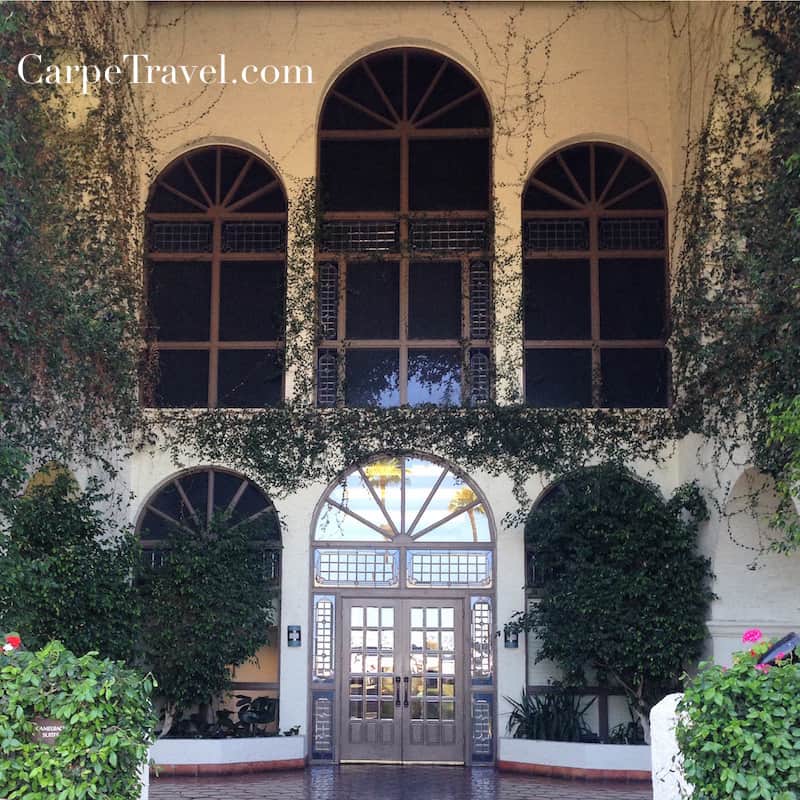
GETTING AROUND
Private drivers may seem like a dime a dozen in, but not all those dimes are equal. Look for those who are well rated and/or ask your hotel for recommendations. In the meantime, here are a few we have used and recommend.
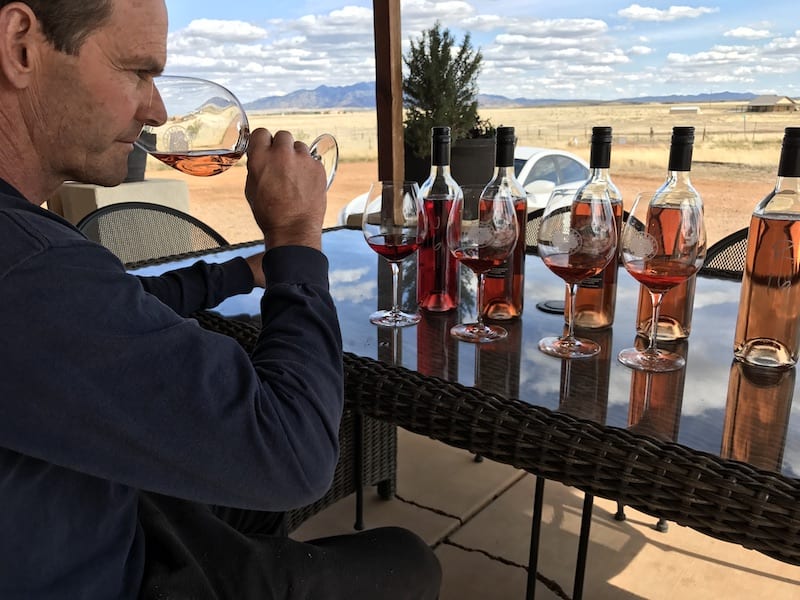
- – Annual Spring Willcox Wine Country Festival
- – Sips & Skies Wine, Beer and Spirits Festival
- – Sedona WineFest
- – Wine Festivals in Every State Not to Miss
BEYOND THE VINES
If you’re looking for things to do besides sipping in the Arizona wineries, we have A LOT OF IDEAS for things to do in Arizona that go well beyond the vines.
When visiting Willcox hit the downtown. It’s a sweet couple of blocks with an astonishing amount of history and personality packed in.
If you’re wine tasting in Phoenix, hike Camelback Mountain, a prominent landmark that can be seen throughout the city and visit he Desert Botanical Garden.
Elaine Schoch is an award-winning travel writer, wine judge, American Wine Specialist and certified by the Wine & Spirit Education Trust (WSET II). At Carpe Travel she shares wine travel destination guides for ALL WINE LOVERS – from novices to experienced pros – to help them plan their wine adventures, arming them with insider tips, must-visit spots, and things to see and do beyond the vines.

